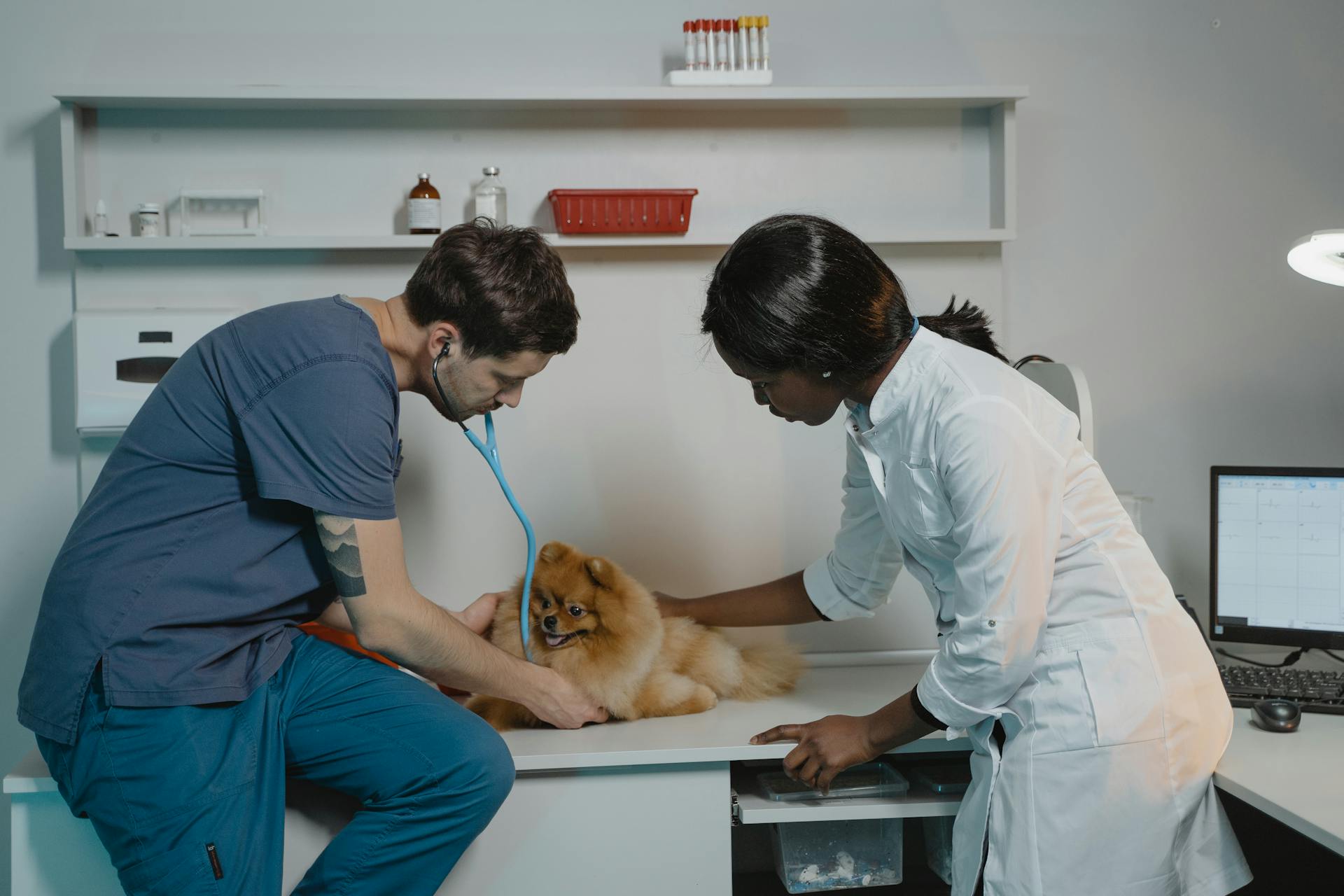
A lump on your dog's epididymis can be a worrisome sight.
These lumps are often caused by an infection or inflammation of the epididymis, which is a tube that stores and transports sperm.
In some cases, the lump can be a sign of a more serious underlying issue, such as testicular cancer.
However, with prompt treatment, many dogs are able to recover fully.
Symptoms of an epididymis lump can include swelling, pain, and difficulty urinating.
It's essential to seek veterinary care if you notice any of these symptoms in your dog.
If this caught your attention, see: How Do Male Dogs Act When in Heat
What is a Spermatocele?
A spermatocele is a cystic distension of the epididymis, the elongated cordlike structure that provides for storage, transit, and maturation of sperm. This condition is usually associated with a blockage of the epididymis.
The accumulation of sperm eventually results in an inflammatory process, and the development of a nodule of tissue, referred to as a sperm granuloma. They can be unilateral or bilateral.
Spermatoceles occur in intact male dogs of any breed, and the risk of developing this disorder increases with age. This means that older intact male dogs are more likely to develop a spermatocele.

A spermatocele is not the same as a sperm duct cyst, although both conditions can cause similar symptoms. However, they have different causes and treatments.
Here are some common causes of spermatocele in dogs:
- Trauma or injury that breaks one of the sperm ducts
- Adenomyosis, which is the migration of the epithelial layer of the epididymis into the surrounding area
- Epithelial hyperplasia, which is an expansion of the outer epithelial layer of the epididymis
- Injury or poor technique during a vasectomy
- Risk increases with age
Diagnosing a Spermatocele
Diagnosing a Spermatocele requires a thorough examination of your dog's testicles and surrounding area. A veterinarian will perform a testicular examination to look for any lumps or abnormalities.
A complete blood count (CBC) and biochemical profile may also be ordered to rule out other conditions. Urinalysis can help identify any underlying issues.
A scrotal ultrasound can detect a spermatocele and provide valuable information about its size and location. An assay for canine follicle stimulating hormone (FSH) may reveal a normal concentration associated with bilateral blockage of the epididymis.
If your dog is unable to produce sperm, an obstruction of the duct should be suspected. However, a testicular biopsy may show normal spermatogenesis, which can be confusing.
Recommended read: Dog Testicular Lump
The following tests may be used to diagnose a spermatocele:
- Thorough testicular examination
- Complete blood count (CBC)
- Biochemical profile
- Urinalysis
- Scrotal ultrasound
- Assay for canine follicle stimulating hormone (FSH)
- Testicular biopsy
Keep in mind that there is no medical management available to unblock an obstructed epididymis, and surgical correction is not routinely performed in veterinary medicine.
Treatment of Spermatocele
If a breeding stud is infertile, it's essential to have your dog evaluated by your veterinarian. Dogs without sperm rarely recover.
A spermatocele is a cystic distension of the epididymis, which is the elongated cordlike structure that provides for storage, transit, and maturation of sperm. This condition is usually associated with a blockage of the epididymis.
The accumulation of sperm eventually results in an inflammatory process, and the development of a nodule of tissue, referred to as a sperm granuloma. They can be unilateral or bilateral.
The good news is that if the condition is unilateral, only located in one testicle, and azoospermia is mild, it may still be possible to breed the dog with good breeding techniques and careful timing.
For your interest: Is Dog Daycare Good for Dogs
Frequently Asked Questions
Do epididymis lumps go away?
Epididymis lumps can resolve with proper treatment, but it's essential to seek medical attention promptly to avoid potential complications
Sources
- https://www.petplace.com/article/dogs/pet-health/spermatocele-in-dogs
- https://wagwalking.com/condition/sperm-duct-cysts
- https://www.merckvetmanual.com/reproductive-system/reproductive-diseases-of-the-male-small-animal/orchitis-and-epididymitis-in-dogs-and-cats
- https://vcahospitals.com/know-your-pet/canine-brucellosis
- https://www.merckvetmanual.com/dog-owners/reproductive-disorders-of-dogs/reproductive-disorders-of-male-dogs
Featured Images: pexels.com


